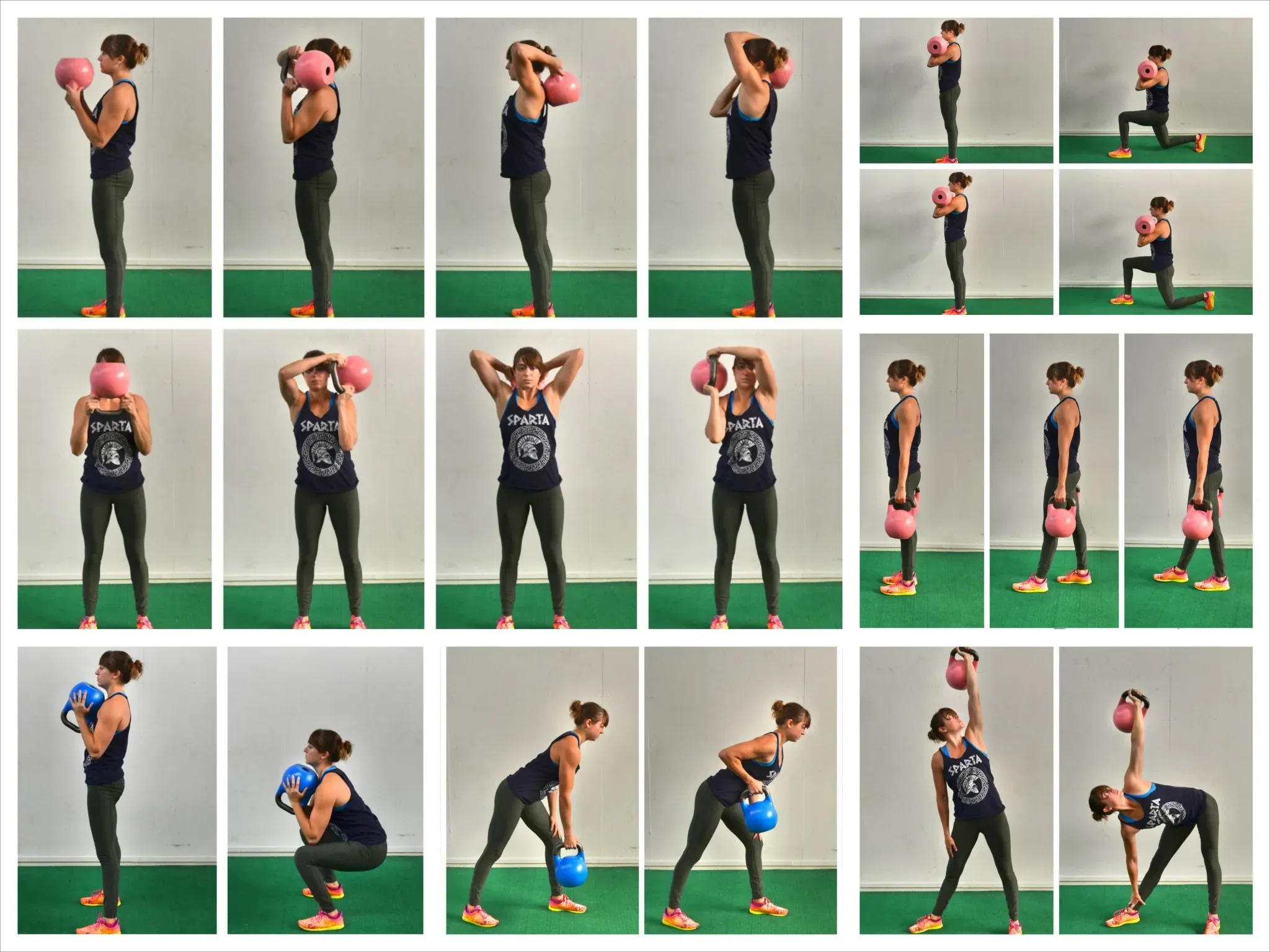Table of Contents
Let's be honest, nobody wants spaghetti arms or a back that disappears when you turn sideways. You want strength, definition, maybe even a little bit of that "can-do" look when you carry groceries. Traditional weights are fine, but they can feel a bit… static. Enter the kettlebell. This isn't just a fancy paperweight; it's a dynamic tool that can seriously upgrade your upper body game.
Unlocking Upper Body Power: The Kettlebell Advantage

Unlocking Upper Body Power: The Kettlebell Advantage
Beyond the Dumbbell: Why Kettlebells Hit Different
Look, you've probably seen kettlebells gathering dust in the corner of a gym or cluttering someone's garage. They look like cannonballs with handles, right? But trust me, they are far more than just awkward weights. When we talk about Unlocking Upper Body Power: The Kettlebell Advantage, we're talking about a fundamental shift in how you train. Unlike dumbbells or barbells, the kettlebell's center of mass is offset from the handle. This little detail changes everything. It forces your stabilizing muscles to work harder, especially in your shoulders and back, just to control the weight during movements.
Think about it: a dumbbell press is mostly up and down. A kettlebell press? It involves more subtle adjustments and control throughout the entire range of motion. This instability, this need for constant control, is precisely what builds that dense, functional strength. It’s not just about moving weight; it’s about mastering movement *with* weight. This dynamic nature is why kettlebells are so effective for building resilient shoulders and a strong, injury-resistant back.
Swinging Towards Greater Strength and Mobility
The real magic happens when you incorporate ballistic movements – the swings, cleans, and snatches kettlebells are famous for. These explosive actions aren't just cardio in disguise; they recruit massive muscle groups simultaneously, including your lats, traps, deltoids, and even your grip strength gets a serious workout. This integrated approach is a cornerstone of Unlocking Upper Body Power: The Kettlebell Advantage. You're not just isolating a single muscle; you're training your body to work as a cohesive unit.
Consider a kettlebell swing. It's primarily a lower-body and hip hinge movement, sure, but your upper back and shoulders are working hard to decelerate the bell at the top and control its descent. This constant engagement builds endurance and strength in a way that static holds or machine work simply cannot replicate. It’s this blend of dynamic power and stabilizing control that makes the kettlebell an unparalleled tool for forging serious upper body capability.
Here are a few reasons kettlebells stand out for upper body work:
- Offset center of mass increases demand on stabilizers.
- Facilitates dynamic, ballistic movements.
- Engages multiple muscle groups simultaneously.
- Builds functional strength and resilience.
- Improves grip strength significantly.
Building a Strong Foundation: Kettlebell Exercises for Your Back

Building a Strong Foundation: Kettlebell Exercises for Your Back
Pulling Power: The Kettlebell Row
Alright, let's talk about your back. It's the engine room of your upper body, and if it's weak, everything else suffers. When building a strong foundation for your kettlebell arm and back workout, you absolutely cannot skip rows. Now, you might think a row is just a row, but using a kettlebell changes the dynamic. The offset weight challenges your lats, rhomboids, and traps differently than a dumbbell. You can do standard bent-over rows, holding a bell in one hand, focusing on pulling your elbow towards the ceiling, squeezing your shoulder blade.
Or, get fancy with a Renegade Row. This one's brutal but effective. You're in a plank position, hands on the kettlebells, and you row one bell up while stabilizing with the other. It hammers your core and anti-rotation muscles along with your back. Just try not to tip over; it's a humbling experience the first few times. Focus on controlled movements, not just yanking the weight up. Quality over quantity, always.
Hinging for Strength: Deadlifts and Swings (with a Back Focus)
People often think of deadlifts and swings as purely lower body or hip exercises, but your back is working overtime in both, especially if you want to do them correctly and safely. A kettlebell deadlift, done with proper form (think flat back, hinging at the hips), is a fantastic way to build strength in your entire posterior chain, including those crucial erector spinae muscles that run along your spine. It teaches you how to brace your core and maintain a neutral spine under load – a fundamental skill for preventing back pain.
Kettlebell swings, while explosive, require significant upper back engagement to control the bell at the top of the movement and absorb the eccentric load on the way down. Your lats and traps are working hard to keep the bell from flying into orbit or crashing into your shins. Think of it as dynamic tension for your upper back. Mastering these foundational movements is key to a solid kettlebell arm and back workout.
So, what does a strong back foundation look like in terms of exercises?
- Bent-Over Kettlebell Rows (single or double arm)
- Renegade Rows (if you're feeling brave)
- Kettlebell Deadlifts (focus on form!)
- Kettlebell Swings (pay attention to the upper back control)
- Single-Arm Rows (from a bench or supported)
Sculpting Definition: Kettlebell Moves for Your Arms

Sculpting Definition: Kettlebell Moves for Your Arms
Pressing for Power and Definition
Alright, let's get to the guns. When you're focused on a kettlebell arm and back workout, the arms get plenty of action, even if it's not always the isolation work you see in a bodybuilding gym. Pressing movements are fundamental, and the kettlebell adds a unique twist. Take the overhead press. Holding that bell overhead requires serious stabilization from your shoulders, triceps, and even your biceps working eccentrically. It's not just pushing weight up; it's balancing a cannonball on a stick.
Try a single-arm overhead press. You'll quickly feel how your core has to engage to prevent you from leaning sideways. It's a full-body effort, but your deltoids, triceps, and the smaller muscles around your shoulder joint are working overtime. And don't forget floor presses – pressing from the ground limits your range of motion slightly but teaches you how to pack your shoulder and press with stability. It’s less about moving maximum weight and more about controlled strength.
Curls and Swings: Arm Work Beyond Isolation
Now, about those biceps. You won't see many traditional kettlebell bicep curls because, frankly, it's not what the tool is best designed for. The magic happens during other movements. Remember those swings we talked about for the back? Your biceps are getting a workout decelerating the bell. Cleans? Your arms are working hard to rack that weight securely. Even holding the bell in the rack position for squats or presses builds serious isometric strength in your biceps and forearms.
Want a more direct hit? The bottoms-up clean is a fantastic, albeit humbling, exercise. You clean the bell so the bottom is facing the ceiling. This requires extreme grip strength and forearm control, along with significant bicep and shoulder stabilization. It’s a true test of strength and focus, and it builds resilience in your wrists, elbows, and shoulders. It's not the pump you get from 20 reps of dumbbell curls, but it builds a different kind of strength – the kind that matters.
Here are some kettlebell moves that seriously challenge your arms:
- Single-Arm Overhead Press (Standing or Kneeling)
- Floor Press (Single or Double Kettlebell)
- Push Press
- Bottoms-Up Press (Advanced!)
- Bottoms-Up Clean (Requires focus!)
- Rack Hold (Just holding the bells!)
- Cleans (The transition hits the biceps)
Putting It Together: Your Kettlebell Arm and Back Workout Plan

Putting It Together: Your Kettlebell Arm and Back Workout Plan
Designing Your Kettlebell Arm and Back Session
Alright, so you've got the moves down – the rows that build that barn-door back, the presses that forge cannonball shoulders, and the dynamic movements that hit everything in between. Now, how do you stitch it all together into a coherent kettlebell arm and back workout that actually yields results? It's not rocket science, but it requires a bit more thought than just doing random exercises. Think about balancing pushing and pulling movements. For every press, you should ideally have a corresponding row. This helps prevent imbalances and keeps your shoulders healthy.
A good structure might involve pairing a back exercise with an arm exercise, or doing them in a circuit. For instance, you could do a set of single-arm rows, rest briefly, then do a set of single-arm overhead presses. Repeat that for a few rounds. Or, you could perform all your back exercises first, then move on to the arm-focused ones. The circuit approach tends to keep the heart rate up and feels more dynamic, which fits the kettlebell vibe. Don't just go through the motions; focus on controlled reps and feeling the muscles work. This isn't about ego lifting; it's about building quality strength.
Making Progress: Frequency, Weight, and Intensity
Consistency is king with any workout plan, and your kettlebell arm and back workout is no different. Aim for 2-3 sessions per week, allowing for rest days in between. Your muscles grow when they recover. Picking the right weight is crucial – you want a bell that challenges you for the target rep range (say, 8-15 reps for strength and hypertrophy), but doesn't force you to sacrifice form. If your form breaks down, the weight is too heavy, or you're getting fatigued. Drop the weight or take a longer rest.
Progression isn't just about grabbing a heavier bell (though that's part of it). You can progress by doing more reps with the same weight, doing more sets, reducing rest times, or moving to more challenging variations of the exercises (like switching from bent-over rows to Renegade Rows). Keep a simple log of your workouts. Knowing what you did last time helps you push a little harder or smarter this time. It’s the small, consistent efforts that build serious strength over time, turning that potential into tangible results.
Here’s a sample structure you could follow for your kettlebell arm and back workout:
- Warm-up (dynamic stretches, light swings)
- Pair 1: Bent-Over Rows + Overhead Presses (3 sets of 10-12 reps each)
- Pair 2: Renegade Rows + Floor Presses (3 sets of 8-10 reps each)
- Back Focused: Kettlebell Deadlifts (3 sets of 8-10 reps)
- Arm Focused: Bottoms-Up Cleans (3 sets of 5-8 reps per side - focus on control!)
- Cool-down (static stretches)
Your Stronger Upper Body Awaits
So there you have it. Ditching the traditional isolated movements for a dynamic kettlebell arm and back workout isn't just a different way to train; it's a smarter way. You've got the tools now – powerful exercises for your back, effective moves for your arms, and a plan to put them into action. Consistency is the boring but true secret weapon here. Stick with it, focus on form over just slinging weight around, and you'll start seeing and feeling the difference. Time to put in the work and build that capable upper body you're after.